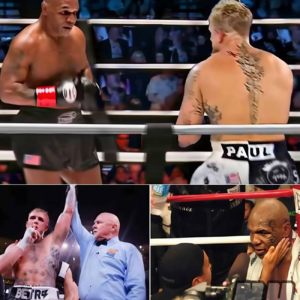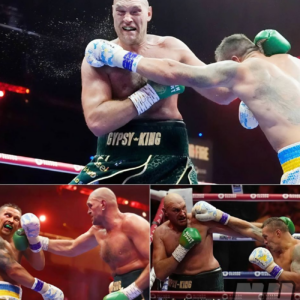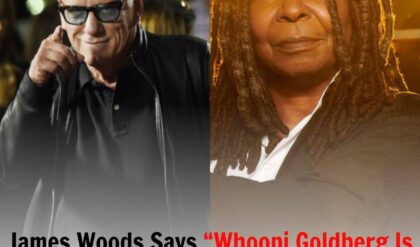Behind the Glitz and Glamour: The Challenges and Triumphs of Brad Pitt’s Hollywood Journey

The Film That Almost Broke Brad Pitt
In the early 1990s, Brad Pitt was rapidly ascending to Hollywood stardom. However, his role in the 1994 film “Interview with the Vampire” nearly derailed his burgeoning career. While the movie played a significant role in cementing his status as a leading man, the production process was anything but smooth for Pitt. Filming began in the vibrant city of New Orleans, which Pitt enjoyed, but the production later moved to the bleak and cold environment of London’s Pinewood Studios.
The conditions at Pinewood Studios were particularly harsh, with Pitt describing the location as dark and depressing. The studio, known for its historical significance as the filming site of many James Bond movies, had not been renovated for years, adding to the gloomy atmosphere. The lack of natural light and the frigid winter weather took a toll on Pitt, leading him to frequently question whether he should continue with the film.
At one point, Pitt seriously considered quitting, despite knowing it would cost him a hefty $40 million. He reached out to his friend, producer David Geffen, to inquire about the financial implications of abandoning the project. Geffen’s straightforward response — confirming the $40 million penalty — forced Pitt to reassess his situation. Ultimately, he decided to endure the challenging conditions and complete the film, a decision that would prove crucial in his career.
The Difficult On-Set Dynamic with Tom Cruise
Another significant aspect of Pitt’s experience on “Interview with the Vampire” was his relationship with co-star Tom Cruise. The two actors, both ambitious and at the peak of their careers, had vastly different personalities, which led to a complicated dynamic on set. Pitt described their relationship as competitive but not hostile, likening their interactions to the North and South Poles.
Pitt’s laid-back demeanor contrasted sharply with Cruise’s intense and enthusiastic approach. This difference in personalities created an underlying tension between them, preventing genuine camaraderie. Despite the competition, Pitt acknowledged Cruise’s talent and success in the industry, emphasizing the respect he had for his co-star’s achievements.
The two actors never collaborated again after “Interview with the Vampire,” but they almost reunited decades later for the film “Ford vs. Ferrari.” Director Joseph Kaczynski revealed that Pitt and Cruise were considered for the lead roles, and they even participated in a table read for the script. Unfortunately, the project fell through due to budgetary constraints, missing the opportunity to bring the two megastars back together on the big screen.
The Rivalry of World War II Films
Pitt and Cruise’s careers intersected again in a different way with the release of their respective World War II films. In 2009, Pitt starred in Quentin Tarantino’s “Inglorious Basterds,” a film set during World War II that depicted a Jewish-American soldier leading a group of operatives on a mission to assassinate Nazi leaders. The film was a commercial and critical success, grossing over $321 million worldwide.
A year prior, Cruise starred in “Valkyrie,” directed by Bryan Singer, which told the story of a failed assassination plot against Adolf Hitler. While “Valkyrie” also performed well at the box office, earning $201 million, Pitt openly criticized the film. He found it to be “absurd” and considered it a poor representation of the Nazi-hunting genre compared to “Inglorious Basterds.”
Pitt’s comments highlighted his belief that Tarantino’s film had set a new standard for World War II movies, effectively closing the chapter on the genre’s potential for fresh storytelling. He praised “Inglorious Basterds” for its compelling narrative and his character’s memorable role, expressing satisfaction with how the film addressed the war’s historical context.
Conclusion
Brad Pitt’s journey in Hollywood is marked by significant challenges, professional rivalries, and enduring success. The near-disastrous experience on “Interview with the Vampire” tested his resolve but ultimately reinforced his commitment to his craft. His complex relationship with Tom Cruise, characterized by competition and mutual respect, added another layer to his storied career. The rivalry between their World War II films further showcased Pitt’s confidence in his work and his willingness to critique industry peers.
As Brad Pitt continues to evolve as an actor and producer, his career remains a fascinating study of resilience and adaptability in the ever-changing landscape of Hollywood. His ability to navigate personal and professional obstacles has solidified his status as one of the industry’s most respected and enduring figures.
News
‘ VIDEO ‘ Leaked Information Benavidez Surrendered After Receiving 2 Punches In The Nose From Canleo Alvarez ️ ️🥊✊ FULL VIDEO 👇👇
In an unexpected twist that has sent shockwaves through the boxing community, leaked information reveals that David Benavidez allegedly surrendered after receiving two powerful punches to the nose from Canelo Álvarez. The news, which emerged from a confidential source, has…
Mike Tyson Was ‘Knocked Out’ By Jake Paul After Just 2 Punches! Information Leaked.. 😱 🥊 FULL VIDEO 👇
In a stunning revelation that has taken the boxing world by surprise, leaked information suggests that the legendary Mike Tyson was “knocked out” by YouTube star-turned-boxer Jake Paul after just two punches. The news, originating from an undisclosed source, has…
Video Of Tyson Fury Successful When Only 4 Punches Killed Usyk In The Rematch Earlier Than Expected FULL VIDEO 👇👇
In an unprecedented turn of events, a video has surfaced showing Tyson Fury achieving a stunning victory over Oleksandr Usyk in their highly anticipated rematch. The footage, which has quickly gone viral, reveals that Fury managed to defeat Usyk with…
“HE’S 🐁” – Naoya Inoue Angrily Criticized Tank Davis For Being Cowardly For Not Accepting Defeat Due To His Own Ability
In a heated exchange that has sent shockwaves through the boxing community, Naoya Inoue has publicly criticized Gervonta “Tank” Davis, accusing him of cowardice for not accepting defeat due to his own abilities. Inoue’s harsh words came during a recent…
Terence Crawford Has No Doubt Who Shakur Stevenson’s Toughest Opponent Will Be
Terence Crawford has seen the skillset of Shakur Stevenson up close and personal. The two world champions are friends and occasional sparring partners despite the difference in weight, often sharpening their tools ahead of high-level title bouts. Stevenson is currently…
Gervonta Davis Talked Continuously During Heated Press Conference Faceoff Frank Martin, Proving Mike Tyson Mocking Tank Davis is ‘talkative woman’
The tension was palpable at the recent press conference faceoff between Gervonta “Tank” Davis and Frank Martin, but what stood out most was Davis’s continuous talking throughout the event. This relentless chatter seemed to reinforce Mike Tyson’s previous mockery of…
End of content
No more pages to load











